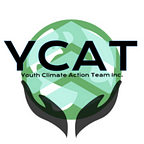What is space dust and how can it help us?
Imagine time-traveling 50 years into the past and telling the world that it would eventually be saved by clouds of lunar dust shot from cannons. Well, it turns out that this idea isn’t a plot-point of science fiction anymore — it’s real. In recent months, researchers have proposed using the moon’s dust to shield the Earth from sunlight and hopefully mitigate global warming. So, how would this actually work?
The University of Utah and the Center for Astrophysics Harvard & Smithsonian led a study to examine the potential of using dust to shade the Earth using a technique that demonstrates planet formation around stars. Through planet formation, astronomical dust is pumped up, forming rings that can intercept the light from their central star.
The general idea is that the earth, moon, and sun are lined up in a manner that allows the moon to be a launch point for a cloud of mined lunar dust that would cast a shadow on Earth and slow rising temperatures.
“Because we know the positions and masses of the major celestial bodies in our solar system, we can simply use the laws of gravity to track the position of a simulated sunshield over time for several different orbits,” said Sameer Khan, a Utah undergraduate student and co-author of the study.
After just one year, researchers say that sunlight traveling to Earth could be reduced by around 1.8 percent, which is more than enough to slow rising temperatures. Although the idea seems promising at first glance, there are a multitude of factors that make the plan somewhat of a questionable last resort.
The tricky part about this plan involves keeping the dust at what is called the “Lagrange point” a point of equilibrium between the sun and earth where objects are able to “park” due to the gravitational pulls. Since the lunar dust quickly scatters, a precise trajectory has to be established for the shield to sustain. Still, this space engineering strategy is more affordable than other pitches — lunar gravity is one-sixth as strong as gravity here on earth — therefore, less energy is required to launch the dust from the moon.
Unfortunately, this new solution has sparked concern among astrophysicists, as the sheer size of the project makes execution unfeasible. It would require 22 billion pounds, or 10 billion kilograms, of dust to be launched each year. Hundreds of launches would be necessary, which has yet to be accomplished. Such a geoengineering project could cost up to 1 trillion dollars. Many scientists argue that such methods are irresponsible. Rather than targeting the real issue of human fossil fuel use, this project would act as a temporary bandage or ventilator.“Global climate change from human injections of greenhouse gasses is a real problem, but there is a much simpler, safer, and cheaper solution: leave the fossil fuels in the ground and run the world on solar and wind power, of which there is enough to supply power for everyone,” Alan Robock, professor of climate science at Rutgers University, said in a statement.
The creation of a “space shield” could also negatively impact the planet’s weather patterns. Dr. Michael Mann, a climate scientist from the University of Pennsylvania, told The Hill, “Efforts to offset carbon dioxide-caused warming with sunlight reduction would yield a very different climate, perhaps one unlike any seen before in Earth’s history, with massive shifts in atmospheric circulation and rainfall patterns and possible worsening of droughts.”
Experts concede that there are easier answers to global warming than tampering with our planet’s climate. Reducing global reliance on fossil fuels may be the only long term solution as of now, since the Earth may fall into a positive feedback loop as it continues to heat, requiring a stronger dust shield to be truly effective.
